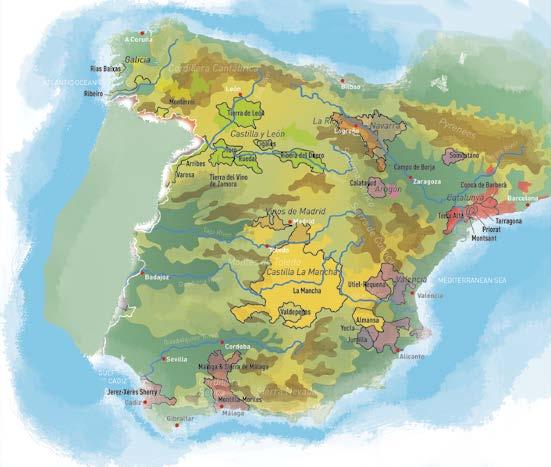
2 minute read
OPIMIAN SUGGESTS
BOARD MEMBER RICHARD MCCAMMON
Richard helped his father make wine and developed his tastes over many years. He travels extensively, tasting wines wherever he goes. He loves bold, complex wines with grassfed steaks. For lighter meals or just sipping, Richard enjoys younger, fruitier wines. Mostly reds with whites for good measure. A good value appeals to his Scottish heritage. Before dinner, a gin martini, shaken, not stirred, goes down well.
Advertisement
GUTIÉRREZ-COLOSÍA AMONTILLADO, DO JEREZ-XÉRÈS-SHERRY, LOT 3285 , P50 K7 CUVÉE, QUALITÄTSWEIN, BURGENLAND, 2018, LOT 3353, P66 CASA DE OUTEIRO MENCÍA, DO RIBEIRA SACRA, GAMA ORIGEN, 2021, LOT 3289, P13
LOESS INSPIRATION, TEMPRANILLO EN ROBLE, DO RIBERA DEL DUERO, LOESS VINOS, 2020, LOT 3315, P31 SOLAR VIEJO TEMPRANILLO, DOCA. RIOJA, BODEGAS SOLAR VIEJO, 2021, LOT 3298, P20 REZABAL REGINA GIN, LOT 3281, P7
OUR PICKS FOR THIS CELLAR
MANAGING DIRECTOR MICHAEL LUTZMANN
Michael has level 3 training from WSET. Before discovering more about wine through training, he only drank heavy reds. While those are still favourites, his palate pleasers now include the full spectrum with dessert/ fortified wines edging toward the top of his list.
MASTER PIECE On the Diversity of Spain
Jane Masters MW is Opimian’s Master of Wine
Spain produces a wide variety of wines from light, low alcohol, crisp whites to the rich sweet fortified wines of the south, and everything in between. The diversity arises as much from Spain’s history as from differences in regional geography and terroirs.
Spain’s wine history dates back to around 1100 BC when Phoenicians colonized the Mediterranean but was rudely interrupted for centuries under Moorish rule. In the Middle Ages, wine production was revived by Christian monks and since has seen periods of ups and downs linked to the Spanish Civil War and rule under General Franco. Today, Spanish wine is most definitely on an upward curve and is one of the most exciting places to explore. After France, Spain is the second-largest country in Western Europe and boasts more land planted to vines than any other country, although low yields mean it ranks only third in wine production volume. The Iberian peninsula is formed by mainland Spain and Portugal, and is almost fully surrounded by ocean and sea. Spain’s geography is dominated by a central plateau – the Meseta – which covers much of the country. The plateau tilts south and west with an average altitude of 600 metres. making Madrid the highest capital city in Europe. A series of mountain ranges – sierras – include the Pyrénées which form the border with France, the Cantabrian Mountains in the north and the Sierra Nevada in the south-east. Rivers play a starring role in wine country, with the Ebro flowing from the north through Rioja and Navarra into the Mediterranean sea. Rivers Tajo, Duero and Miño flow through Portugal and like the river Guadalquivir in Sherry country empty into the Atlantic. Spain’s diverse wine terroirs are a result of the relative influences of the Atlantic, the Mediterranean, local rivers, as well as surrounding mountains and their altitude. The north of Spain, known as Green Spain, is where the influence of the Atlantic Ocean dominates. Rainfall is high, temperatures are low with frequent incoming fronts blowing in from the Bay of Biscay. It is difficult to ripen grapes in the coastal Basque region around Bilbao and San Sebastian. Local grape varieties resistant to disease produce relatively low alcohol wines with tart acidity and some spritz. The northwest





